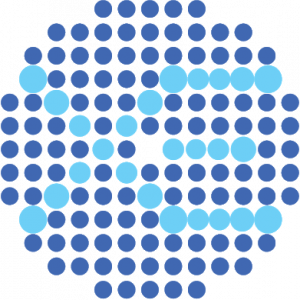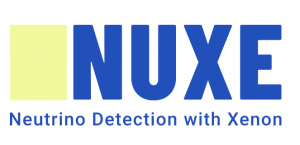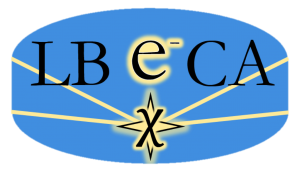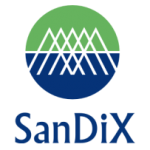Our group is developing novel particle detector technologies based on noble liquids to search for new physics with dark matter and neutrinos, and to apply these techniques to practical applications.
Research Projects:
 XENON1T/nT experiment, located at Gran Sasso National Laboratory in Italy, is a dark matter search experiment using tonnes of liquid xenon to search for dark matter particles. More than 150 physicists from 26 institutions around the world are currently working on the experiment. XENON1T is the world’s largest dark matter detector, continuously taking dark matter search data until the end of 2018. XENONnT is an upgrade of XENON1T, by increasing the target mass from 2 to 6 tonnes. The UCSD group, supported by National Science Foundation on this project since 2017, is working on the calibration, data analysis and hardware development for the experiments. XENON1T/nT are flagship liquid xenon detectors and keep making progress in our understanding of dark matter, neutrinos and development of the detector technologies. Explore the publications from XENON collaboration here.
XENON1T/nT experiment, located at Gran Sasso National Laboratory in Italy, is a dark matter search experiment using tonnes of liquid xenon to search for dark matter particles. More than 150 physicists from 26 institutions around the world are currently working on the experiment. XENON1T is the world’s largest dark matter detector, continuously taking dark matter search data until the end of 2018. XENONnT is an upgrade of XENON1T, by increasing the target mass from 2 to 6 tonnes. The UCSD group, supported by National Science Foundation on this project since 2017, is working on the calibration, data analysis and hardware development for the experiments. XENON1T/nT are flagship liquid xenon detectors and keep making progress in our understanding of dark matter, neutrinos and development of the detector technologies. Explore the publications from XENON collaboration here.
 The DARWIN Observatory is the next generation large liquid xenon (50 tonnes) experiment to probe WIMP-parameter space three orders of magnitude lower than the current experimental bounds. It will be a multi-purpose detector to also search for axions and axion-like particles, to observe neutrinos from the Sun and supernovae and to search for rare nuclear decay processes to measure the absolute mass of neutrinos. The experiment is currently in R&D phase towards a technical design, followed by the construction. The collaboration (DARWIN, XENON) has recently joined force with LZ collaboration to form the XLZD consortium for the next generation experiment. The science topics to be explored by the next generation liquid xenon observatory can be found in this long paper.
The DARWIN Observatory is the next generation large liquid xenon (50 tonnes) experiment to probe WIMP-parameter space three orders of magnitude lower than the current experimental bounds. It will be a multi-purpose detector to also search for axions and axion-like particles, to observe neutrinos from the Sun and supernovae and to search for rare nuclear decay processes to measure the absolute mass of neutrinos. The experiment is currently in R&D phase towards a technical design, followed by the construction. The collaboration (DARWIN, XENON) has recently joined force with LZ collaboration to form the XLZD consortium for the next generation experiment. The science topics to be explored by the next generation liquid xenon observatory can be found in this long paper.

The NUXE project intends to build an ultra-low threshold liquid xenon detector to observe the Coherent Elastic Neutrino Nucleus Scattering (CEvNS) signals from reactor neutrinos. The ultimate goal is to use a compact liquid xenon (or other noble element) detector to monitor reactor fuels by observing hundreds of neutrino events per day. The project is supported by a DARPA Young Faculty Award at the initial stage to build a 10-100 kg scale liquid xenon detector that is sensitive to single electrons from sub-keV nuclear recoil events caused by neutrinos. More info about this project can be found in this talk and this paper.
 LBECA, stands for Low Background Electron Counting Apparatus, is an R&D project from both experimental and theoretical fronts to understand and reduce the few electron background in a two-phase xenon detector. The successful reduction of the few electron background will improve the detector’s sensitivity to light dark matter with mass below 1 GeV, as well as for reactor neutrino detection through CEvNS. The project was supported by Department of Energy, with members from Purdue University, Stony Brook University, Lawrence Berkeley National Laboratory, Lawrence Livermore National Laboratory and University of California San Diego. The physics goal of this project is described in this proceeding paper. We are currently making progress to reduce the few-electron background with a single-phase liquid xenon detector.
LBECA, stands for Low Background Electron Counting Apparatus, is an R&D project from both experimental and theoretical fronts to understand and reduce the few electron background in a two-phase xenon detector. The successful reduction of the few electron background will improve the detector’s sensitivity to light dark matter with mass below 1 GeV, as well as for reactor neutrino detection through CEvNS. The project was supported by Department of Energy, with members from Purdue University, Stony Brook University, Lawrence Berkeley National Laboratory, Lawrence Livermore National Laboratory and University of California San Diego. The physics goal of this project is described in this proceeding paper. We are currently making progress to reduce the few-electron background with a single-phase liquid xenon detector.
 SanDiX (San Diego Xenon Test Facility) is our local liquid xenon detector test facility. It serves as a platform to train undergraduate and graduate students to perform various R&D studies of the liquid xenon detector technology. Past and current projects on SanDiX include measurement of liquid xenon’s response to low energy electron recoil events, investigation of light and electron emissions from different types of electrodes, development of a sealed liquid xenon time projection chamber , detection of electroluminescence using a single-phase liquid xenon detector , detection of low energy electronic recoils and single electrons in a single-phase liquid xenon proportional scintillation counter etc.
SanDiX (San Diego Xenon Test Facility) is our local liquid xenon detector test facility. It serves as a platform to train undergraduate and graduate students to perform various R&D studies of the liquid xenon detector technology. Past and current projects on SanDiX include measurement of liquid xenon’s response to low energy electron recoil events, investigation of light and electron emissions from different types of electrodes, development of a sealed liquid xenon time projection chamber , detection of electroluminescence using a single-phase liquid xenon detector , detection of low energy electronic recoils and single electrons in a single-phase liquid xenon proportional scintillation counter etc.